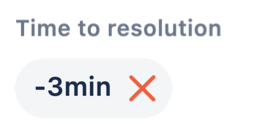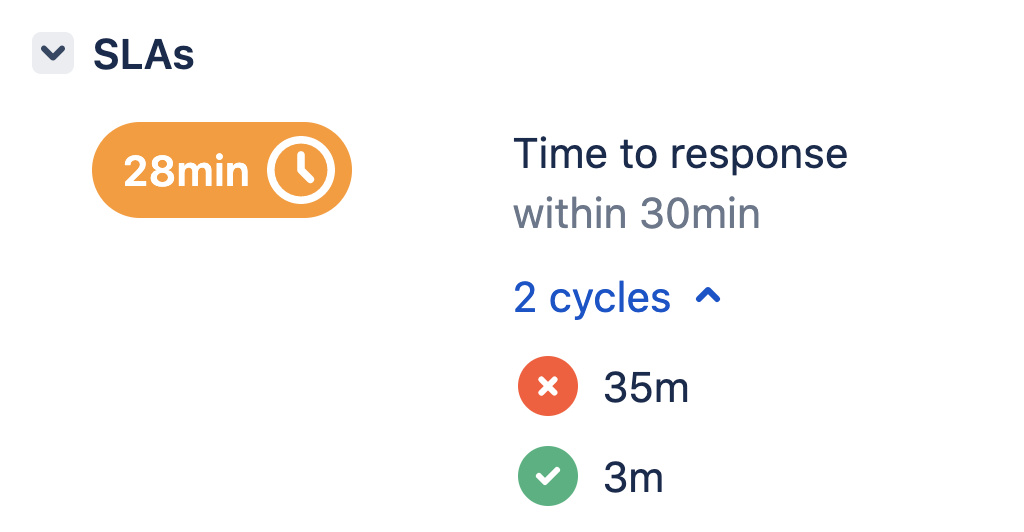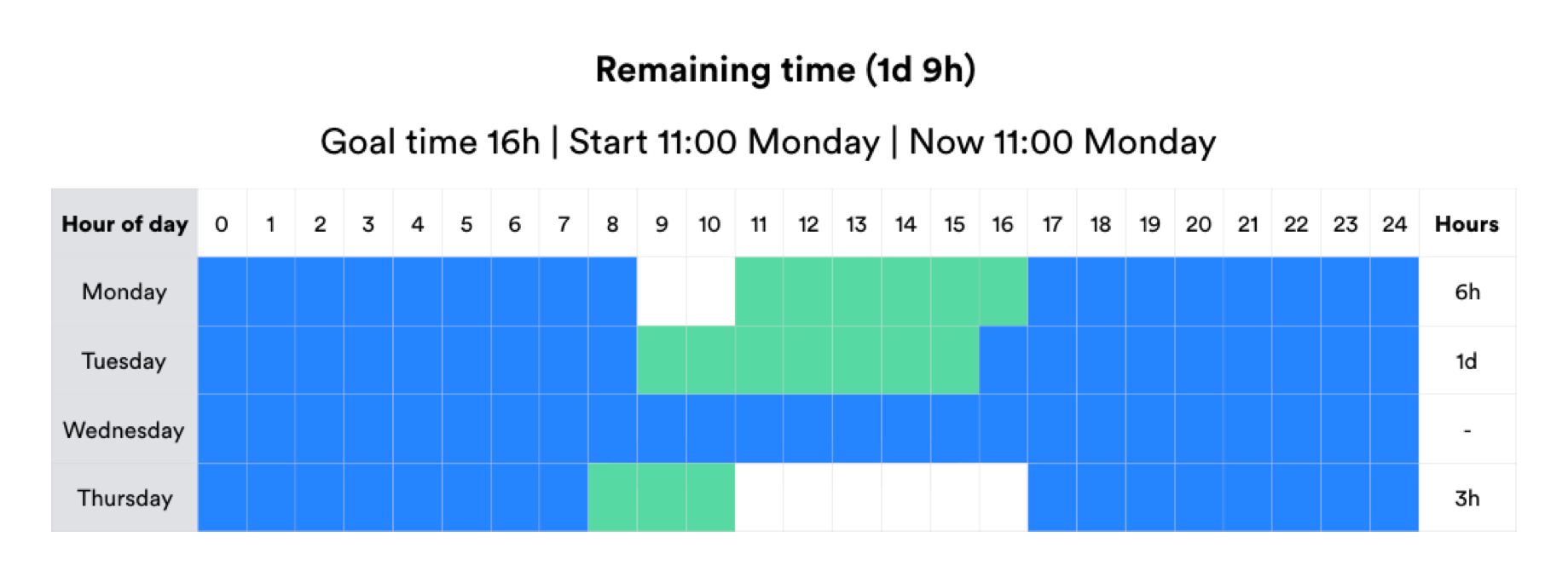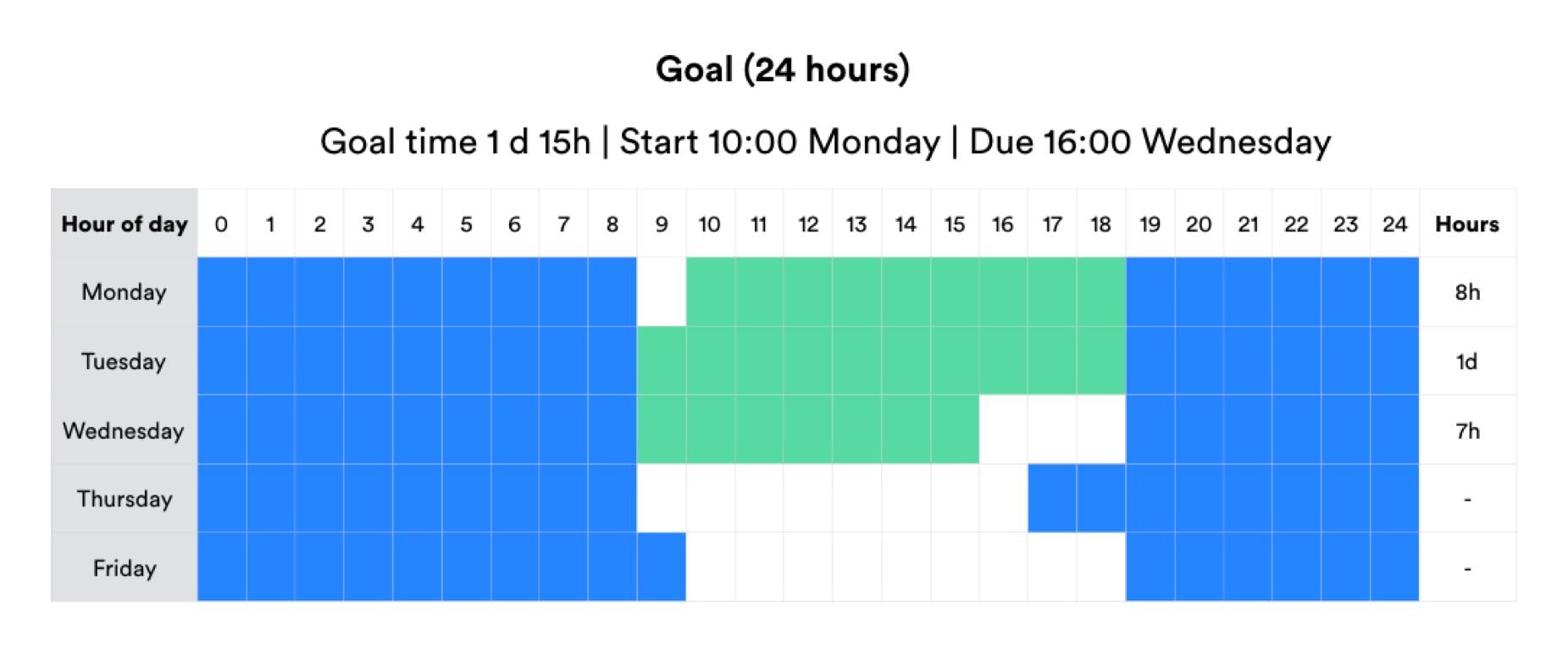How teams see SLAs
Support teams rely on SLAs to plan and track their time against issues.
Jira Service Management shows SLAs in a human readable time, instead of only hours and minutes. That way, service project agents don't spend precious time working out what 78:00 means in days.
How it looks
The SLAs look a bit differently for agents and for customers, if they're enabled on the customer portal:
On this page:
Ongoing SLAs
The tracker uses colors to indicate the urgency of an for an issue, based on the time remaining.
| Agent view | Customer portal | Description |
|---|---|---|
The clock is ticking, it has more than 1 hour left. | ||
| The has less than 1 hour before breaching. | ||
| The has less than 30 minutes before breaching. | ||
| The is breaching (few seconds left) or has breached the target, in which case the amount of time past the goal is shown as a negative number. | ||
| The has been paused or is currently outside of working hours. When the is at risk or breached when paused, it will use the same colors and layout as you can see above, but the clock icon will change to a pause icon. |
Completed SLAs
A completed displays the time remaining when the was completed (or the amount of time breached) and an icon to indicate whether the was completed successfully or unsuccessfully.
| Agent view | Customer portal | Description |
|---|---|---|
The completed successfully. | ||
| The breached its target. |
Past cycles
SLAs can be configured to start, pause, and stop based on various conditions. After an SLA has stopped and if one of the start conditions is detected again, the SLA will be reset to start a new cycle.
The past cycle will be displayed in the SLAs panel in the issue view, underneath the SLA’s name. You’ll see an expander under that where the corresponding cycles are listed.
There will be as many previous cycles as times an SLA is reset.
Past SLA cycles show only in the agent view and aren’t available in the customer view.
Here’s how past SLA cycles are displayed.
| Agent view | The SLA has two past cycles:
| |
|---|---|---|
| Customer view |
Units of time
The following units represent time in an:
| Seconds | n/a |
| Minutes | m (min if single unit) |
| Hours | h |
| Days | d |
| Weeks | w |
| Months | mo |
| Years | yr |
Only 1 or 2 units, at a time, are displayed for simplicity, with a combination of the following:
| min | |
| h | m |
| d | h |
| w | d |
| mo | |
| yr |
How the clock works
Jira Service Management calculates minutes, hours, days, and weeks by using the working hours set in the associated calendar. It calculates a month and a year by using approximations of 4 weeks and 12 months respectively.
Read Create and edit calendars to learn how to track your teams' working hours and assign calendars to an goal.
Remaining time
Remaining time is calculated by looking at the time from now until due, taking into account any pauses.
For example, Request A has an goal time of 16 hours, with a start time of 11:00 on Monday, and working hours as follows:
- Monday 09:00-17:00
- Tuesday 09:00-16:00
- Wednesday not working
- Thursday 08:00-17:00
- Friday not working
- Saturday not working
- Sunday not working
How to read the diagrams:
Goal time
Jira Service Management calculates goal time similar to remaining time, but now is set to start of goal. Goal time doesn't take any future pauses into account.
Regardless of the current time, the goal time is always calculated from the start time.
Partial days
In some situations, your Agents might see time displayed as something like 1d 26h. This happens when an starts and stops for a period of less than a day (for example, 7 hours in an 8 hour working day).
All partial days are accumulated as hours and minutes, but not converted to 1 day, because the definition of a day will change depending on the working hours set in the calendar.
For example, Request B has a goal time of 24 hours, with a start time of 10:00 on Monday, and working hours displayed in the diagram below. The goal is 1d 15h and the is due at 16:00 on Wednesday.
It works like this:
- From 10:00-18:00 on Monday is not a complete working day (according to the calendar). Total = 8 hours.
- From 09:00-18:00 on Tuesday is a complete working day (according to the calendar). Total = 1 day.
- From 09:00-16:00 on Wednesday ( due time) is not a complete working day (according to the calendar). Total = 7 hours.
8 hours + 1 day + 7 hours = 1d 15h
Multiple targets
If the issue meets the criteria for multiple SLAs, trackers for each will appear. In addition, if the has had multiple cycles, you can hover over the symbols for more details on how the was met for that particular cycle. For example, in an that is measured based on when an issue is Waiting for support, you can see whether the was met each time the issue started Waiting for support.
Sorting
When you view a list of issues (in a queue or elsewhere), you can sort them by their remaining times. Ongoing issues are listed first, with the shortest time remaining at the beginning of the list. Completed issues are ranked last, but aren't sorted by the remaining time.
























